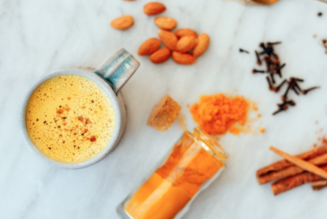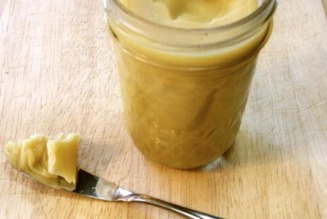Health Benefits Of Ajmoda
Celery has long been a staple on the list of superfoods and healthy snacks. It is abundant in our diet and is easily available. However, the celery seed is not as well-known as the vegetable. Ajmoda, or celery seed is an amazing digestive herb. It literally means ‘goats delight’ and is renowned for its digestive properties. Ajmoda can grow very well in dry soil indicating its affinity for absorbing moisture and its beneficial properties in the use of kapha conditions.
Organic Digest Tone (Triphala Plus)
Good health depends on strong, efficient digestion.
It can sometimes be confused with Ajwain (Bishops seed), and indeed they have similar properties, but Ajmoda is rather more potent than Ajwain when it comes to deepanpachan qualities (removing toxins and kindling digestive fire). It is particularly effective on pacifying vata and kapha. In excess it can aggravate pitta due to its heating qualities and should be monitored in conditions such as hyperacidity. In addition to its deepanpachan effects, it also works well as a carminative and a nervine. As it also benefits the respiratory system, it can also be used in lung conditions.
Organic Spice Mix
Ready-to-use spice mixtures satisfy the six ayurvedic tastes considered essential for balance.
Properties
Ajmoda is a light, dry and penetrating herb with a pungent taste. It has a heating effect in the body and its post digestive effect is also pungent. It has a strong affinity for the digestive, nervine, respiratory and urinary systems.
Some indications, amongst others, include:
- Asthma
- Bronchitis
- Cough
- Sinus congestion
- Flatulence
- Intestinal cramps
- Weak digestion
- Spasms
- Muscular tension
- Dysmenorrhea
- Menstrual cramps
- Lower backache
- Nocturia
- Cystitis
- Dysuria
- Arthritis
- Rheumatism
- And many more!
It is important to be aware of some of the contraindications of using Ajmoda. It is advised against usage in hyperacidity and other high pitta conditions. Always seek a physician’s advice before undertaking herbal supplementation.
Usage
There are many combination compounds that involve Ajmoda to address certain conditions. Some being:
- Ajmoda and ginger, fennel, cardamom, cumin and coriander for digestive discomfort
- Ajmoda with pippali, haritaki and anthrapachaka for vata/kapha type coughs
- Ajmoda with Jatamansi, brahmi and tagar for nervine debility
There are numerous recipes which use Ajmoda and it is used abundantly in many savory dishes. A delicious way to experience the benefits of Ajmoda is in paranthas! These are flavorful flatbreads that can bring digestive ease in a soothing and delicious way!
~Ajmoda Parantha Recipe~
- 2 cups of flour (whole wheat, or any grain that is desired)
- 1 cup of water
- ¼ tsp salt
- ¼ tsp pepper
- 1 tsp ghee
- 1 tsp of Ajmoda seeds
Utensils
- Rolling pin
- Wooden chopping board
- Mixing bowl
- ‘Thava’ or flat pan for cooking the paranthas
Steps
1. Place all the ingredients except the water into a mixing bowl
2. Mix together using a little of the water at a time until the mixture becomes a dough.
3. Let it sit covered for 30 mins
4. Knead the dough for a good 5-7 mins using more water if needed
5. Heat a ‘thava’ or a flat pan on the stove
6. Using some dry flour , start shaping small pieces of the dough into small balls
7. Making sure the wooden chopping board is nicely floured, roll out the dough balls into flatbreads one at a time.
8. Cook each flatbread on the pan under medium/high heat, flipping each side until both sides are nicely browned and cooked through
9. Garnish with some chutney and ghee, and enjoy!
- Other vegetables and herbs can also be added as desired. Some popular variations are cilantro as well as potatoes and carrots.
References
- Lad, V. (1999). The complete book of Ayurvedic home remedies. New York: Three Rivers Press.
- Sharma, H. (2011). Ayurvedic Healing. Singing Dragon
- Lad, V. (2002). Textbook of Ayurveda. Albuquerque, N.M.: Ayurvedic Press.
- Lad, V., & Frawley, D. (1986). The yoga of herbs: An Ayurvedic guide to herbal medicine. Santa Fe, N.M.: Lotus Press.
- Pole, S. (2013). Ayurvedic medicine the principles of traditional practice. London: Singing Dragon.
- Green, J. (2000). The herbal medicine-makers’ handbook a home manual. Berkeley, Calif.: The Crossing Press.





![Female Health: Amenorrhea [cessation of menses] – An Ayurvedic Perspective](https://healthyayurveda.com/wp-content/uploads/2015/07/1.-Amenorhea--327x219.png)




